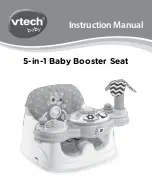
Eaton
®
Power Xpert 9395 Integrated Battery Cabinet (Model 1085 and 1085HR) Installation Manual 164201687—Rev 06
www.eaton.com/powerquality
1-1
Chapter 1
Introduction
The 9395 battery cabinet is designed to use with the 9395, 9395P, and 9395C. The primary difference is the
9395C uses an Under Voltage Relay instead of a Shunt Trip device to control the battery breaker.
During brownouts, blackouts, and other power interruptions, battery cabinets provide emergency DC power to
the UPS to safeguard operation of the critical load. The Integrated Battery Cabinet (IBC) systems are housed in
single free-standing cabinets. Model 1085 or 1085HR with a single battery voltage range is available to meet
application runtime needs. Up to six cabinets may be installed to further extend battery runtime. The cabinets
match the UPS cabinet in style and color. Figure 1-1 shows the Power Xpert 9395 Model 1085 or 1085HR
Battery Cabinet.
CAUTION
The 1085 and 1085HR battery cabinets CANNOT be intermixed. Serious damage to equipment
may result.
Mechanical lugs located at the front of the cabinet reduce installation time, and removable battery trays with
quick disconnects between trays reduce battery maintenance time. A DC-rated circuit breaker within each
cabinet provides protection and servicing isolation.
1.1
Configuration and Installation Features
The 9395 Model 1085 battery cabinet is designed to be installed in a standalone configuration using two to six
battery cabinets. Power wiring is installed externally between each battery cabinet and the UPS or battery
disconnect using conduit.Battery cabinets may be installed adjacent to the UPS or in a separate location.
If the battery cabinet is installed adjacent to the UPS, the recommended installation location for the battery
cabinet is on the right side of the UPS cabinet. This location will allow for future expansion using an external
module.
Cabinets can be permanently bolted to the floor or left standing on leveling feet.
Power and control wiring can be routed through the top or bottom of the cabinet depending on installation
configuration. Connections are made to easily accessible terminals.
1.2
Customer Interface
Battery breaker shunt trip terminals are provided to connected the battery cabinet to the UPS. The shunt trip is
used to open the battery breaker in the event of an emergency or rapid shutdown of the UPS system.
Auxiliary contact terminals are provided to signal when the battery breaker is closed or open.
NOTE
Startup and operational checks must be performed by an authorized Eaton
Customer Service Engineer, or the warranty terms specified on page W-1 become
void. This service is offered as part of the sales contract for the UPS system.
Contact service in advance (usually a two-week notice is required) to reserve a
preferred startup date.
NOTE
The 9395C uses a UVR instead of the shunt trip in the battery breaker.
NOTE
The 9395 system can trip a maximum of six battery cabinets total. This applies to
both the 1085 standard and High Rate series batteries. If more than six battery
cabinets in total are needed in a separate UPM battery configuration, DO NOT hook
up the shunt trips. Instead, use external hardware to perform the shunt trip
function.










































